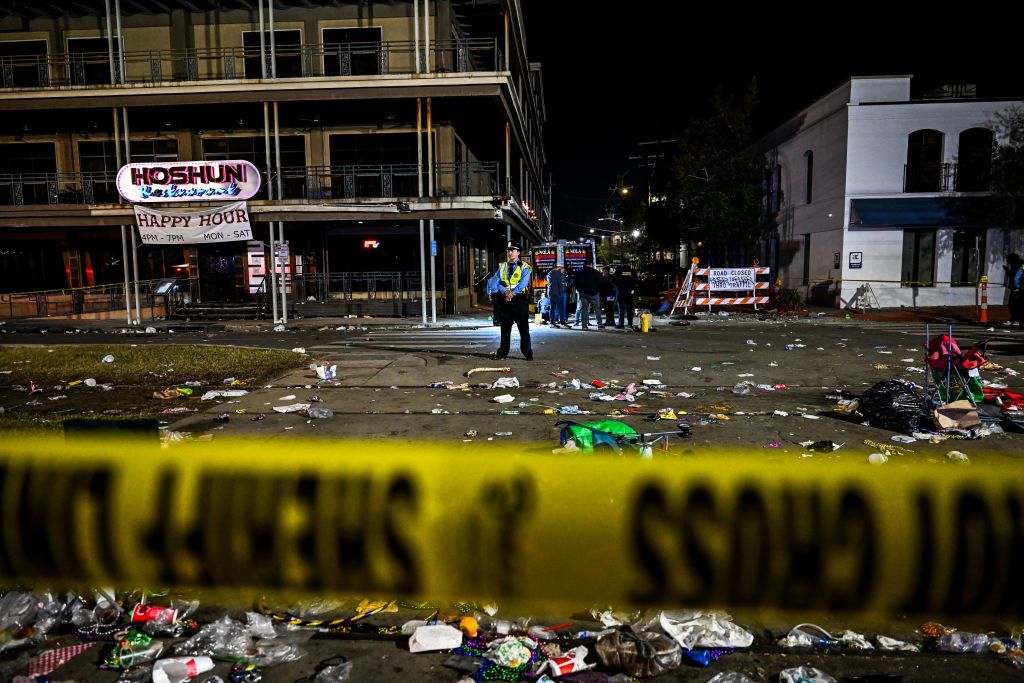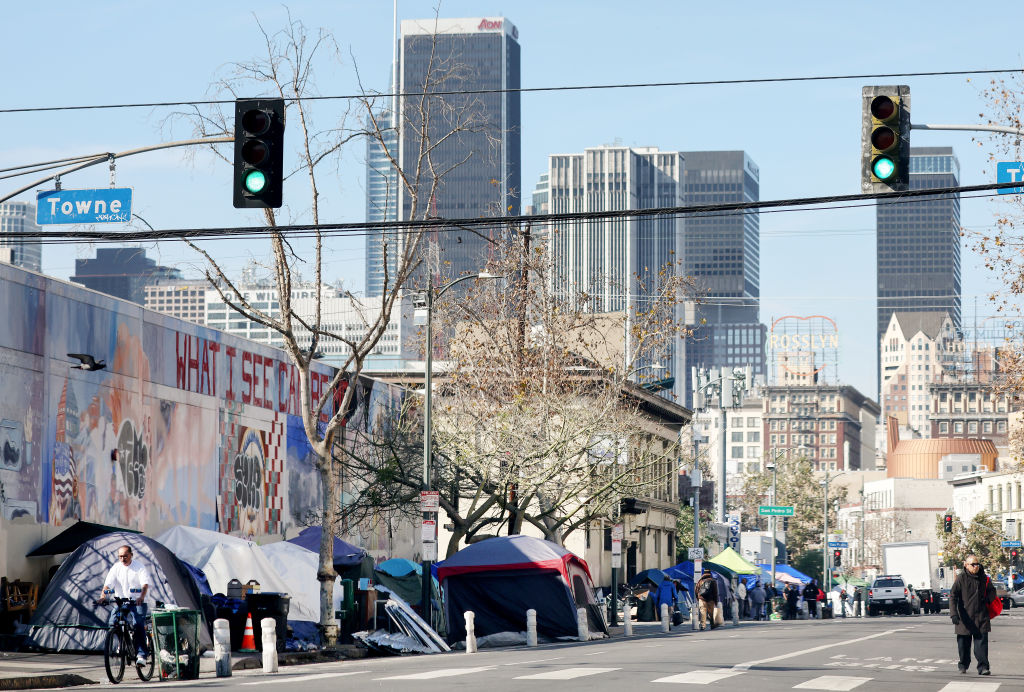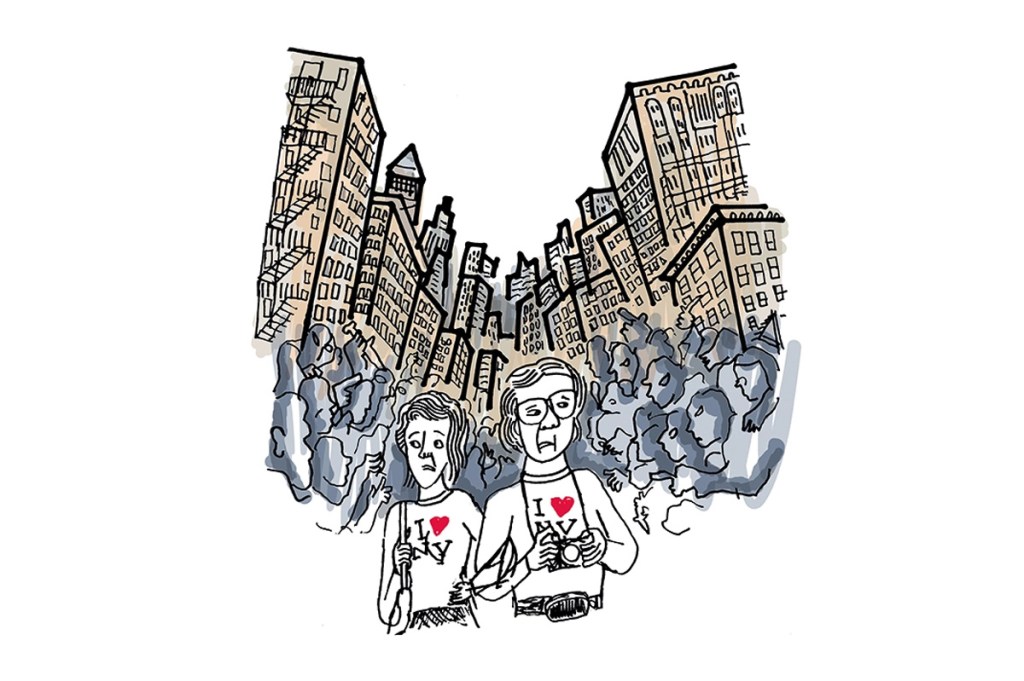They’re calling it “revenge travel”: the desire to make up for the touring opportunities we all lost when we were locked down in our pandemical homes. As a keen professional traveler, I confess I’ve got a fearsome case of this bug: I’ve spent the past twenty months going just about anywhere I can, playing catch up.
Here’s a brief list of the cities I have visited since mid-2021: Tbilisi, Seville, Munich, New Orleans, Lisbon, Reykjavik, Bangkok, Yerevan, Rome, Istanbul, Athens, Da Nang, Nashville, Los Angeles, Florence, Phnom Penh, Tucson. I could add a dozen more, but you get the gist. I’ve missed a terrific number of domestic social engagements; but I have recently seen quite a lot of the world and, more pertinently, seen how the urban world is coping post-pandemic.
Crime used to lurk on the wrong side of the tracks; now it is right there in your face
Conclusion? Every city has suffered in various ways, and the scars are visible. In East Asia the lingering lesions are psychological: they are all still wearing masks. In Europe, normal unmasked street life has returned, but shuttered shops, gyms and restaurants show a throb of economic pain persists. Some business districts — e.g. the City of London, in my home town — are taking a worrying time to recover that rush-hour vivacity. It may never be what it was.
However, there is only one country where I have actually wondered: will these cities ever recover? Could they be in terminal decline? And that country is the United States, the home of the modern city as we know it, the birthplace of the skyscraper, the elevator, and the idea of “downtown.”
American cities have complex problems nationwide, and each has its own braided mix of post-pandemic difficulties, but I will take three towns to symptomize the major issues. Not least because I have personally visited these three cities post-Covid.
Let’s start with New Orleans. I’ve been visiting for twenty years, and I adore most of it, from the touristy oyster bars of the French Quarter to the debonair splash of sherry served in your turtle soup in the Garden District. I love the stately trees in the sunburned boulevards, I love the mighty sweep of the indifferent Mississippi, I love the way you can see street names and realize Basin Street is actually a place, not just a famous jazz tune recorded by Nawlins-born Louis Armstrong.
But on this last visit, what I noticed above all else is the crime. Or rather the feeling of crime as an ever-present threat.
Crime is hardly new to NOLA. It is a fiercely unequal city with a troubled history (the Big Easy was the slaving capital of the world for several decades, though the guide books tend to gloss over this). But that crime used to lurk on the wrong side of the tracks; now it is right there in your face, as you try to sip your Sazerac.
The statistics support this vibe. Last year, New Orleans saw 280 murders, giving the city its highest murder rate since 1996, and also the highest murder rate per capita in the entire USA. Indeed New Orleans now has the eighth highest murder rate in the world (the top seven are all Mexican cities ravaged by the drug wars). Put it another way, in terms of homicides, New Orleans is more dangerous than any city in Africa.

Nor is it just murder. Theft, burglaries, rapes, pickpocketing, mugging, generalized violence and peculiarly brutal forms of car-theft known as carjacking, where you might end up losing a limb or your life if you try to defend your hired Kia, are all soaring. And this is happening in a city mired in a poisonous, politicized, post-Covid, post-George Floyd culture war, with the central concepts of jail
Nor is it just murder. Theft, burglaries, rapes, pickpocketing, mugging, generalized violence and peculiarly brutal forms of car-theft known as carjacking, where you might end up losing a limb or your life if you try to defend your hired Kia, are all soaring. And this is happening in a city mired in a poisonous, politicized, post-Covid, post-George Floyd culture war, with the central concepts of jail – and bail — being angrily debated and inconsistently applied.
My second example city is Los Angeles. Here I cannot confess any personal love, though I do like aspects of it, from the golden canyons to the Getty Museum. I also like the fact that it is full of uniquely interesting, ambitious people. If you want to meet a Russian basketball star turned Oscar-nommed screenwriter with a big interest in quantum computing, LA is your place.
Unfortunately, in LA these days you are far more likely to encounter an ex-US Marine with facial sores shouting lunatic threats at pigeons as he emerges from his half-burned tent, seeking out fentanyl. Because LA — like so many cities on the sunny West Coast (and increasingly elsewhere in the US) — has an almighty homeless problem, stemming partly but not entirely from drug abuse (high rents, punitive eviction laws, absent welfare nets and complex pull factors are also at play). Recent statistics reckon that one in every 200 residents of the city is homeless: about 70,000 people.
LA’s homeless problem, like crime in New Orleans, is not an entire surprise — Skid Row in downtown LA is historically notorious for a reason. What is new is the surge in homelessness and the geographical expansion. Homeless people can now be found anywhere in Los Angeles: under freeways, sleeping in cars, in lines of shacks by railroads, or simply slumped on a sidewalk. It is estimated that five homeless people die every day in the City of Angels.

Such is the extent of the homeless/drug problem here, and across the US, that it is direfully impacting life expectancy, which is in astonishing free fall. Life expectancy in America is now 76.4 years. For comparison, in the UK it is 80.9 years, in Canada it is 81.7, and in Spain it is 82.3.
To put this in another context: life expectancy in Cuba and Thailand is higher than life expectancy in the US, and if trends persist, life expectancy in America will soon be overtaken by Vietnam. Doctors believe that drugs, drug addictions, drug overdoses — all that pharmacological horror blighting the lives of the poor people in their moldy tents in LA County — is a major factor. American cities might or might not be dying, but people are definitely dying in American cities, too often and too early. And this in a country which spends more on healthcare than anywhere comparable.
My last example city is quite different. Denver, Colorado. It’s partly different because my visit last fall was my first ever. And my initial impressions were good. Denver gleams. It is clearly prosperous (Colorado is one of the richer states in the Union.) At its best, and on your first approach, it feels like an orderly, modern, maybe Austrian city, handsomely enlarged, ringed by desert, forest and mountains. It even has a well-preserved Victorian quarter: sunny and walkable, full of craft breweries and Beat-era whisky bars.
However, after a few hours of flâneuring this attractive city, a friend murmured to me: “Where is everyone?” Answer came there none, because everyone is not in Denver. That is to say: hardly anyone is going into central Denver any more. Everyone is still working from home, in the endless ticky-tacky suburbs that they are continuously building up the gray sides of the Rockies.
Some Denverites may drive into town, and the office, one or two days a week. Or they come in for a dinner. Some will not even do that. I know this, because I asked them. They lament the state of the city, but they love their big cars and their big houses, and the local mall is so convenient and, you know, it’s just so much hassle going into the old place. Maybe next week?
In certain areas of Denver this bizarre mix of prosperity and desolation feels near-hallucinatory: the skyscrapers glint against the blue Colorado sky, the street cleaners pick the immaculate sidewalks, the trendy artisan cafés open forlornly for business that does not come.
It is like a plague has hit the place, which indeed it has — but it has hit Denver so much worse than cities elsewhere in the world, and the problems Covid has engendered here might only multiply. Because empty streets encourage crime, and crime pushes people away all the more, and a falling population means a falling tax take, which then means less money to tackle widening problems — and thus a city enters a Detroit-type death spiral.
American cities might or might not be dying; people are definitely dying in American cities
If all this sounds pessimistic, that’s because it is. It’s not like I have cherry-picked the unluckiest cities in the States. I could have looked at Portland, Chicago, Philadelphia. I could have selected San Francisco, whose problems are so bad that the New York Times actually gave up attacking “dystopian Britain” for a morning, and instead put the boot in to once-beloved Frisco.
But then I could also have looked at New York City, which boasts at least two troubling indicators: its population is falling (perhaps 300,000 quit the city during Covid, and they are apparently not coming back), and the rich are likewise exiting. Even the Big Apple has maggots munching away in its core.
Can urban America turn this around? It is impossible to say. Of all the nations in the world, America specializes in the comeback, and revivalism. America often sees itself as Rocky Balboa: training on the steps of the Museum of Art in Philadelphia, ready to return to glory. The trouble is, if a modern-day Rocky Balboa trained on the steps of the Museum of Art in Philadelphia, he’d quite likely step on a syringe and die of blood poisoning.
This article was originally published in The Spectator’s UK magazine. Subscribe to the World edition here.





















